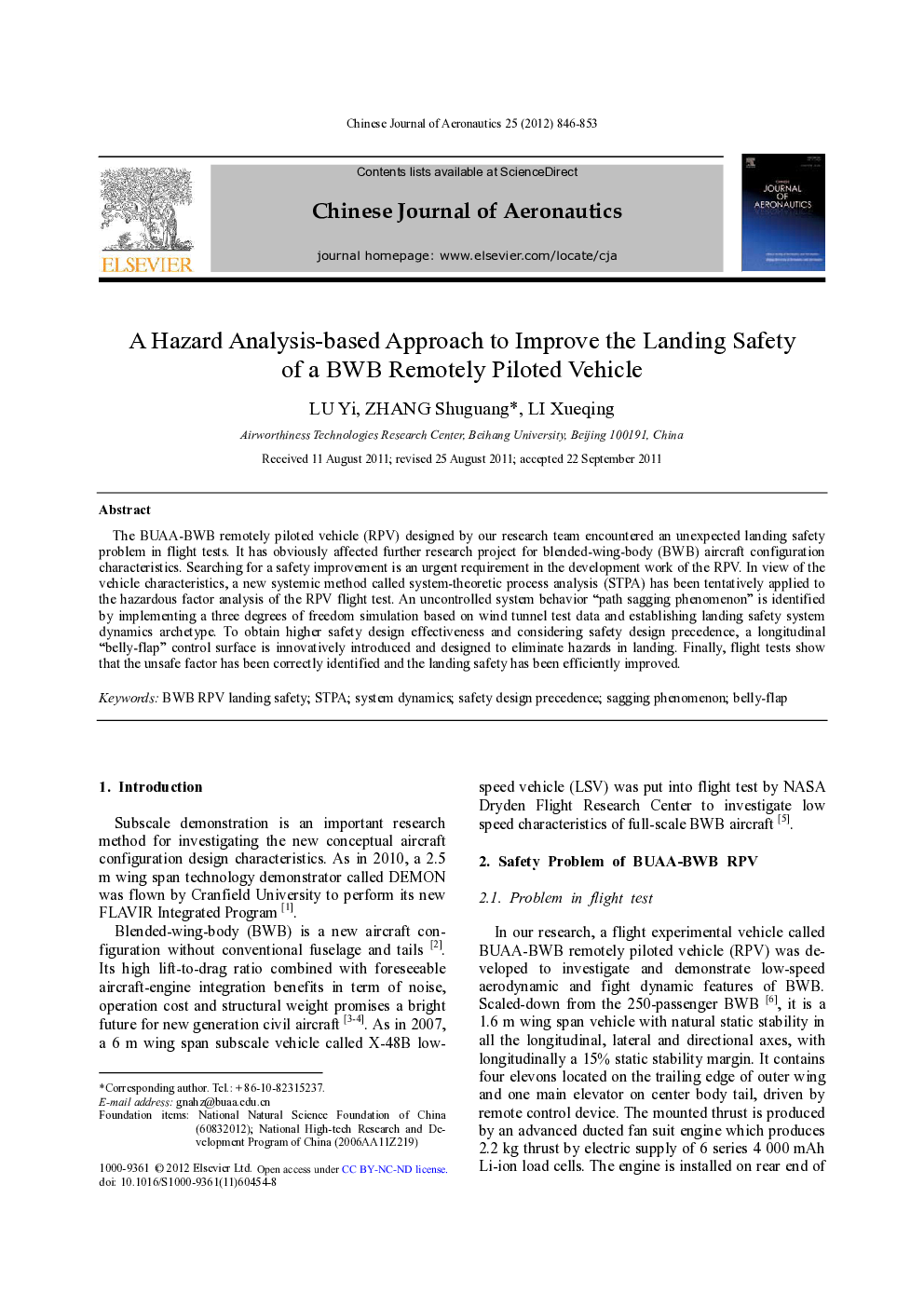| Article ID | Journal | Published Year | Pages | File Type |
|---|---|---|---|---|
| 765935 | Chinese Journal of Aeronautics | 2012 | 8 Pages |
The BUAA-BWB remotely piloted vehicle (RPV) designed by our research team encountered an unexpected landing safety problem in flight tests. It has obviously affected further research project for blended-wing-body (BWB) aircraft configuration characteristics. Searching for a safety improvement is an urgent requirement in the development work of the RPV. In view of the vehicle characteristics, a new systemic method called system-theoretic process analysis (STPA) has been tentatively applied to the hazardous factor analysis of the RPV flight test. An uncontrolled system behavior “path sagging phenomenon” is identified by implementing a three degrees of freedom simulation based on wind tunnel test data and establishing landing safety system dynamics archetype. To obtain higher safety design effectiveness and considering safety design precedence, a longitudinal “belly-flap” control surface is innovatively introduced and designed to eliminate hazards in landing. Finally, flight tests show that the unsafe factor has been correctly identified and the landing safety has been efficiently improved.
